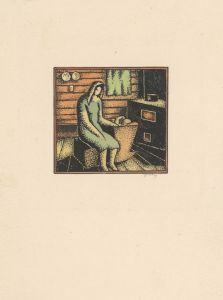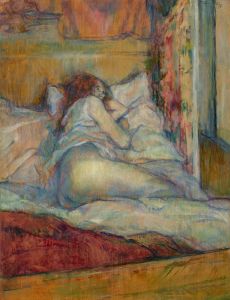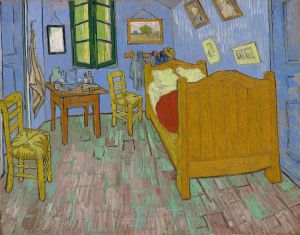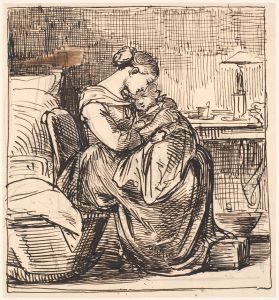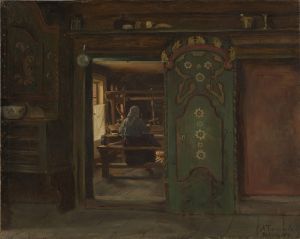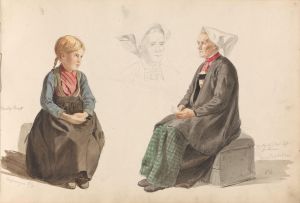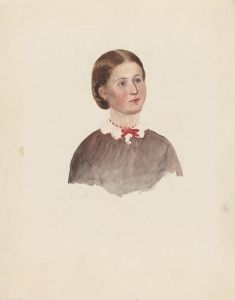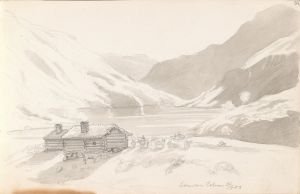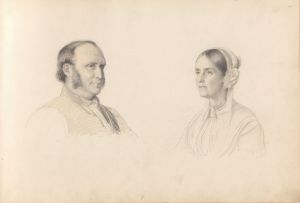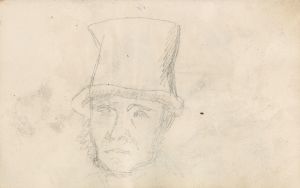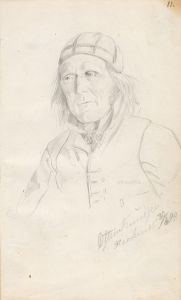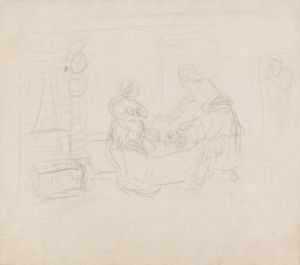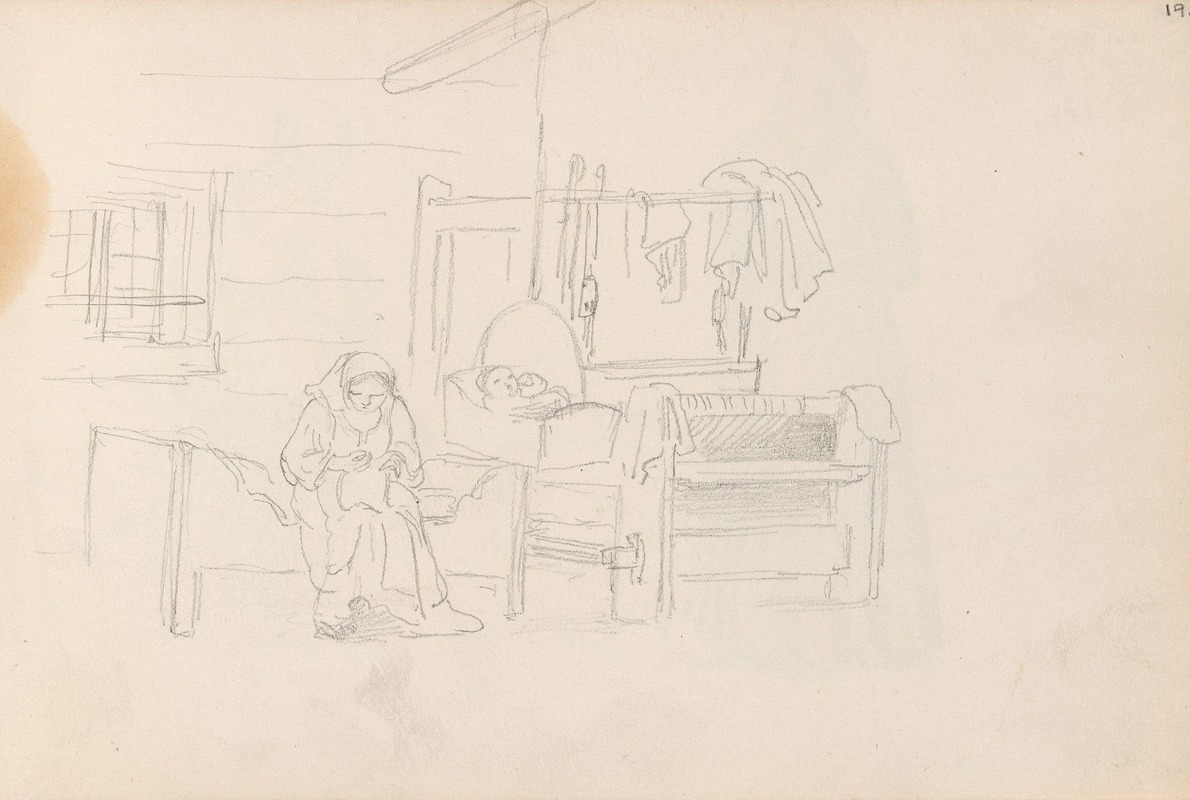
Interiør med seng, hengevugge, vev og figurer, Spättungen
A hand-painted replica of Adolph Tidemand’s masterpiece Interiør med seng, hengevugge, vev og figurer, Spättungen, meticulously crafted by professional artists to capture the true essence of the original. Each piece is created with museum-quality canvas and rare mineral pigments, carefully painted by experienced artists with delicate brushstrokes and rich, layered colors to perfectly recreate the texture of the original artwork. Unlike machine-printed reproductions, this hand-painted version brings the painting to life, infused with the artist’s emotions and skill in every stroke. Whether for personal collection or home decoration, it instantly elevates the artistic atmosphere of any space.
Adolph Tidemand, a prominent Norwegian painter of the 19th century, is renowned for his contributions to the Romantic Nationalism movement in Norway. His works often depict Norwegian folk life, traditions, and landscapes, capturing the essence of the country's cultural heritage during a period of burgeoning national identity. One of his notable works is "Interiør med seng, hengevugge, vev og figurer, Spättungen," which translates to "Interior with Bed, Hanging Cradle, Loom and Figures, Spättungen."
This painting is an exemplary representation of Tidemand's focus on interior scenes that reflect the domestic life of Norwegian rural communities. The artwork showcases a detailed interior setting, likely from a traditional Norwegian farmhouse, featuring elements that were common in such environments. The presence of a bed, a hanging cradle, and a loom indicates the multifaceted nature of domestic life, where living, sleeping, and working spaces were often intertwined.
The hanging cradle is a particularly significant element, as it symbolizes the continuity of family and tradition, a theme prevalent in Tidemand's work. Cradles were often passed down through generations, and their depiction in art underscores the importance of family heritage and the nurturing of future generations within the home. The loom, another central feature of the painting, highlights the role of textile production in rural Norwegian life. Weaving was a crucial domestic activity, often carried out by women, and it played a vital role in the household economy.
Tidemand's attention to detail is evident in the intricate depiction of the loom and other household items, which are rendered with a high degree of realism. This meticulous approach not only serves to document the material culture of the time but also imbues the scene with a sense of authenticity and respect for the subjects portrayed. The figures in the painting, though not specified in detail, likely represent members of the household engaged in their daily activities, further emphasizing the theme of domestic life.
The setting of "Spättungen" is not widely documented, but it can be inferred that it represents a typical rural environment in Norway during the 19th century. Tidemand's choice of such settings reflects his interest in capturing the essence of Norwegian identity through the lens of everyday life. His works often served as visual narratives that celebrated the simplicity and resilience of rural communities, contributing to a broader understanding and appreciation of Norwegian culture.
Adolph Tidemand's paintings, including "Interiør med seng, hengevugge, vev og figurer, Spättungen," played a significant role in shaping the visual representation of Norwegian national identity during a time of cultural revival. By focusing on the intimate aspects of rural life, Tidemand not only documented the customs and traditions of his homeland but also fostered a sense of pride and continuity among Norwegians. His legacy continues to be celebrated for its contribution to the cultural and artistic heritage of Norway.






